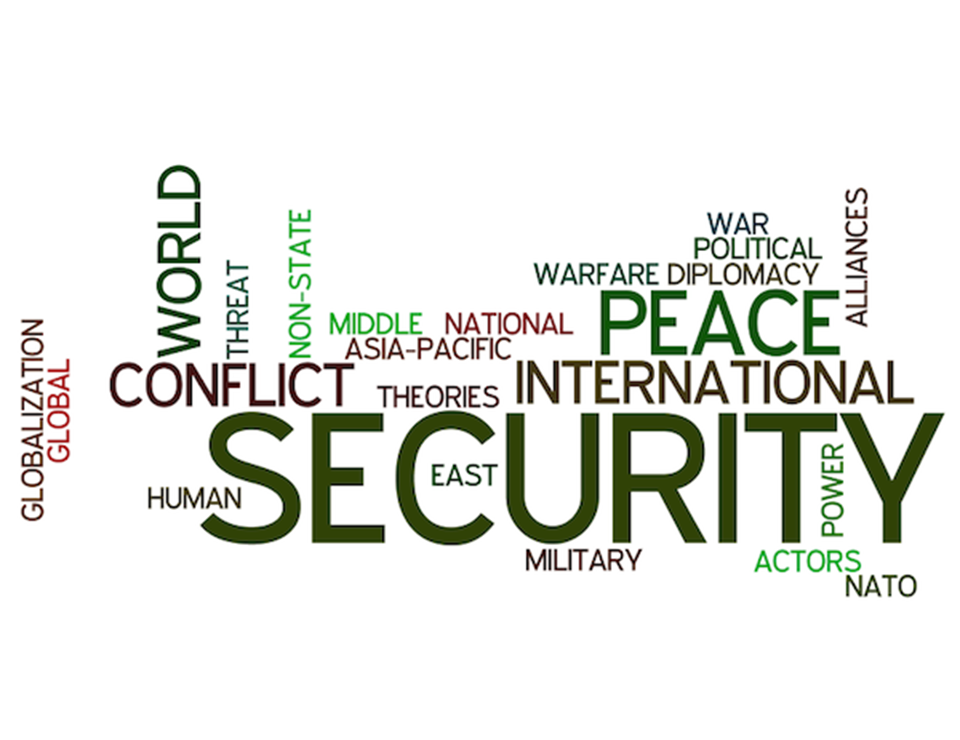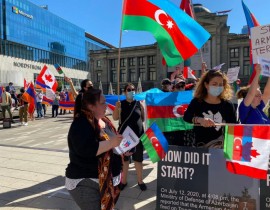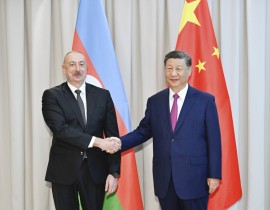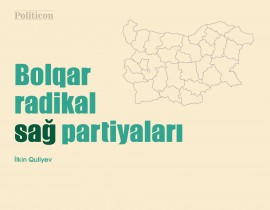Politicon.co
In which ways could Copenhagen School’s analysis of security be critiqued by alternative proponents of a new security paradigm?

Copenhagen School, as a part of critical security studies, developed in response to the traditional analysis of security. The School argued that issues are securitized, and become security issues through speech acts. The overall structure is called securitization process. However, the Copenhagen School’s analysis of security has been consistently criticized by alternative advocates of a new security paradigm due to several shortcomings in its analysis security. This essay addresses some of those shortcomings through the lenses of alternative proponents of a new security paradigm. The essay argues that security is not only produced by the securitization processes through the speech acts, since other issues outside of the speech acts have sufficient impact on the construction of security. It is concluded that although epistemology used by the Copenhagen School in the social construction of security is quite strong, the securitization through speech acts is narrow and lacks comprehensive analysis of security.
The Copenhagen School’s analysis of security concept addressing the question of how we know that we are dealing with security (Ciuta, 2009, p. 301) is associated with the securitization theory articulated by Ole Wæver (1995). Wæver devised a new model for the explanation of security concept in response to traditional security understanding. Copenhagen School emerged from that urgent scholarly demand that connected several scholars including Barry Buzan, Ole Wæver and Jaap de Wilde, who basically affiliated with the Copenhagen Peace Research Institute consistently contributing to the development of Copenhagen school.
However, The Copenhagen School’s analysis of security is criticized by several proponents of a new security paradigm. The human security paradigm criticizes the Copenhagen School because it lacks a potential to sustain normative utility. This is to say that Copenhagen School’s analysis of security is not a useful framework to make recommendations for the further developments of security frameworks that are under threats. Another critique of the Copenhagen School’s analysis of security came from the Paris School arguing that security cannot be understood solely through speech acts, since the processes outside of the speech acts have substantial impact on the securitization of the different issues. The essay is divided into two parts: while the first part explains the Copenhagen School’s analysis of security, the second part outlines the critique of the School’s analysis of security.
The Copenhagen School’s analysis of security
Securitization model is the main contribution of the Copenhagen school for the analysis of security concept that has been consistently criticized by the different advocate of a new security paradigm. The securitization idea was originally devised by Ole Wæver (1995). Barry Buzan made significant contribution to the development of a securitization model that emerged as an alternative to traditional realist understanding of the security concept (Williams, 2003, p. 512). Securitization model claims that security as one of “essentially contested concepts” (Gallie, 1956) is socially constructed, being processed through several steps. The way that an issue is securitized is called a securitizing process. This idea lies in the core of the securitization model. Securitizing is attained through a speech-act that can be described by the formula: “saying something, something is done” (Munster, 2012). In short, securitization deals with "who securitizes (securitizing actor), on what issues (threats), for whom (referent object), why, with what results, and not least, under what conditions." (Buzan, Wæver, & Wilde, 1998, p. 32). In accordance with the School, every issue cannot be securitized. The proponents of the idea argue that an issue passes through three discursive processes before it gets securitized. The first precondition for successful securitization is the presence of an existential threat to the referent object, which is something under threat and needs protection. Second, a successful securitization needs a securitizing actor having certain power to apply extraordinary measures in handling the securitized issues. Third, extraordinary instruments taken in dealing with the threats need to be justified in a sense that the popular view should accept the existence of the securitized issues, and tolerate the use of extraordinary measures. To put it in a nutshell, the Copenhagen School’s analysis of security puts forward the idea that implies securitizing of an issue through speech-acts in which an un-politicized issue becomes a security one, coming to justify the use of the extraordinary measures.
The Critique of the Copenhagen School’s Analysis of Security
Meanwhile, the Copenhagen School’s analysis of security has been strictly criticized by the alternative proponents of a new security paradigm. One way to critique the Copenhagen School’s analysis of security is human security paradigm. In fact, that paradigm is different from the Copenhagen school in a sense that while the former is a policy-forming tool, the latter is a theoretical framework for the understanding and analysis of security concept (Floyd, 2007, p. 38). However, human security paradigm can be considered an alternative to the Copenhagen School’s securitization idea for its normative utility. The human security paradigm argues that the Copenhagen School’s analysis of security lacks normative utility for the improvement of the security and living conditions of the people in poor conditions (Floyd, 2007, p. 39).
Another way on the critique of the Copenhagen School’s analysis of security is provided by the Paris school of security studies. The proponents of the Paris school go further on the definition of the securitization process arguing that the process of securitizing needs to be redefined through sociological and criminological lenses rather than the narrow analysis used (Bigo, 2008, p. 4). Moreover, Copenhagen School’s focus on the discourse analysis of political leaders’ speeches denied the proponents of the School the opportunity to concentrate on the prior possible securitization outside of speech-acts. This is to say that addressing and analysing security via a discursive examination of speech acts is not sufficient, since the analysis of strategies and instruments used by the specialists, as well as the impacts of speech acts on other matters, including personal and civil security, are the essential parts of the security analysis (Fierke, 2007, p. 174). Therefore, the Paris School’s analysis of security, compared to the Copenhagen School, utilizes a sociological method that examines both speech acts and other technological, strategic and practical issues separate from speech acts. Particularly, Bigo (2008, p.125) argues that the practices employed by the “(in)security professionals” directly participate in the securitization process. In this sense, Bigo asserts that not only political leaders and high authorities but also private companies, intelligent agencies, and border control officials have direct roles in securitizing issues that are related to their specific areas (Bigo 2008, p.125 – 127). In short, securitization of some issues is not only processed through speech acts, but also it stems from the diverse processes present in bureaucratic practices and routines. It is not accidental that the immigration threat to the EU emerged from the long-term institutionalisation processes that integrated immigration issues under the authority of professionals dealing with security, including police (Bigo, 2002).
Furthermore, the critique of the Copenhagen School’s analysis of security stemmed from the School’s “narrowness” in the utilization of speech acts, since the speech act analysis of security ignores so many aspects of it outside of speech acts. The construction of security via the securitization model articulated by the Copenhagen School is “narrow” in terms of three manners (McDonald, 2009, p. 563). First, narrow is the definition of a speech act in terms of factors outside the securitization framework. This is to say, in the theoretical framework devised by the Copenhagen School’s analysis of security, the audience and the factors that leads to security construction are excluded from the analysis, and they are not theoretically explained. The second narrow aspect of the Copenhagen School’s analysis stemmed from the lack of sufficient reference to the contextual situation of the act within the securitization framework itself, as the School’s analysis is basically focused on the “moment of intervention” (McDonald, 2009, p. 564). The third narrow aspect of the securitization model is connected to the narrow definition of a speech act’s nature through determination of security threats avoiding the understanding of security in “particular contexts”. To say that any issue is converted into a security issue through a speech act is too narrow an understanding of a security concept since it is a part of different contextual practices separate from speech acts (McDonald, 2009, p. 579).
More importantly, as argued by Thierry Balzacq (2005), the comprehensive understanding of constructing security socially is impossible without a reference to the role the audience have in securitization process as well as the political and historical contexts that bring the possibility of discursive security. Consequently, “a speech view of security does not provide adequate grounding upon which to examine security practices in real situations” (Balzacq, 2010, p. 56). The securitization model of the Copenhagen School’s also underestimates the role of the gender issue in the securitization process, since “a focus on speech acts means contributing to the silencing of women, whose suffering and engagement with security discourses is neglected in a framework that focuses on the articulation of the powerful” (Hansen, 2000, p. 306).
In conclusion, security is not all about something that fits the securitization model (Cuita, 2009, p. 303), since it is produced through the historical processes of power competitions among the groups within the wider society (Lipschutz, 1995, p. 8). To sum up, although the Copenhagen School provided an unconventional way of the analysis of security through the securitization model, it is strictly criticised by the alternative proponents of a new security paradigm. Essentially, the speech acts methodology in the study of security fails to address the issues occurring outside of the speeches acts. The speech acts way of securitization also fails to address the role of the visual and physical representation in the securitization processes through the media images. Finally, the speech acts definition of security is very narrow, and it eliminates gender issues, audience and conceptual practices in which security is embedded.
References
1. Balzacq, T. (2005). The Three Faces of Securitisation: Political Agency, Audience and Context. European Journal of International Relations, 171-201.
2. Balzacq, T. (2010). Constructivism and Securitization Studies. In M. D. Cavelty, & V. Mauer, The Routledge Handbook of Security Studies (pp. 56–72). Abingdon;New York: Routledge,.
3. Bigo, D. (2008). International Political Sociology. In P. Williams, Security Studies: An Introduction. New York: Routledge.
4. Buzan, B., Wæver, O., & De Wilde, J. (1998). Security: A New Framework for Analysis. Boulder, Colo: Lynne Rienner Publication.
5. Buzan, B., Wæver, O., & Wilde, J. d. (1998). Security: A New Framework for Analysis. Boulder: Lynne Rienner Publishers.
6. Ciuta, F. (2009). Security and The Problem of Context: A Hermeneutical Critique of Securitization Theory. Review of International Studies, 301-326.
7. Emmers, R. (2007). Securitization.” In . Edited by , . . In A. Collins, Contemporary Security Studies (pp. 109–125). Oxford: Oxford University Press.
8. Fierke, K. (2007). Critical Approaches to International Security. Cambridge: Polity Press.
Floyd, R. (2007). Human Security Journal . Human Security and the Copenhagen School’s Securitization Approach: Conceptualizing Human Security as a Securitizing Move, 38-49.
Gallie, W. (1956). Essentially Contested Concepts. Proceedings of Aristotelian Society, 167-198.
9. Hansen, L. (2000). The Little Mermaid’s Silent Security Dilemma and the Absence of Gender in the Copenhagen School. Millenium, 29(2), 289-306.
10. Hansen, L. (2000). The Little Mermaid's Silent Security Dilemma and the Absence of Gender in the Copenhagen School. Journal of International Studies, 285-306.
11. McDonald, M. (2009). Securitisation and the Construction of Security. European Journal of International Relations, 14(4), 563-587.
12. Munster, R. v. (2012, June 26). Securitization. Retrieved from Oxford Bibliographies: http://www.oxfordbibliographies.com/view/document/obo-9780199743292/obo-9780199743292-0091.xml
13. United Nations Development Programme. (1994). Human Development Report. New York: Oxford University Press.
14. Wæver, O. (1995). Securitization and Desecuritization. In R. Lipschutz (Ed.), On Security (pp. 46–86). New York: Columbia University Press.
15. Wilkinson. (2007). The Copenhagen School on Tour in Kyrgyzstan: Is Securitization Theory Useable Outside Europe? March 2007 vol. 38no. 1. Security Dialogue, 38(1), 5-25.
Williams, M. C. (2003). Words, Images, Enemies, Securitization and International Politics, 2003(47):512. International Studies Quarterly, 511-531.
![]()
- TAGS :
- TOPICS :
- Security








jpg-1599133320.jpg)
